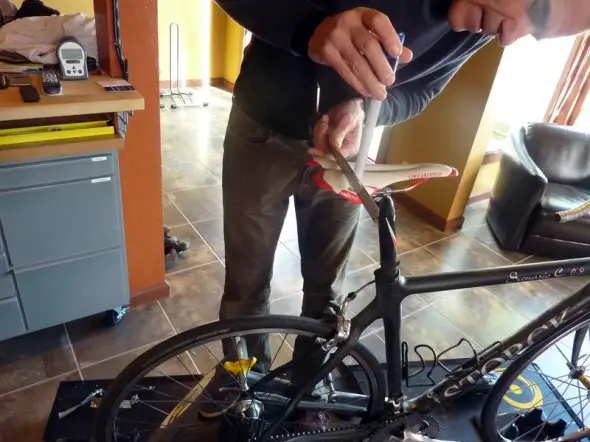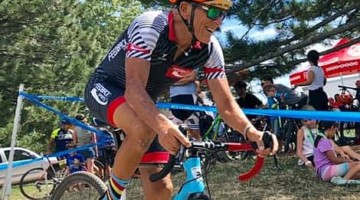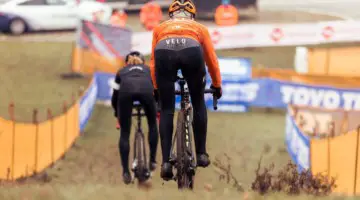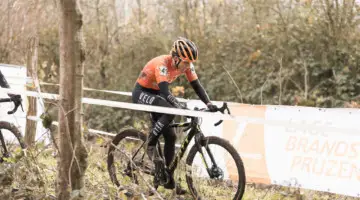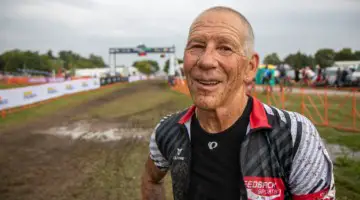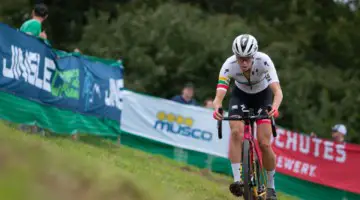In my last article on nutrition, I made the point that I, as a coach, don’t feel the need to be the expert in every area. Instead, I prefer to know a little about a lot and know people who know a lot about specific subjects. Coaching sometimes is having other expert resources to bring into an athlete’s support team.
Bike fitting is an area that has always interested me, even more so as I’ve taken an interest in mobility and movement. I’m lucky that two good friends are also excellent fitters, which makes it easy to kick around ideas. If you’re looking for a ’cross-specific fit, now is the time to investigate that. Give yourself some time to adapt to the new fit and address any areas that require collaboration and time with your fitter.
For today’s Training Tuesday, I went to my experts Todd Schoeni and Mitch Graham and asked a few questions of them.
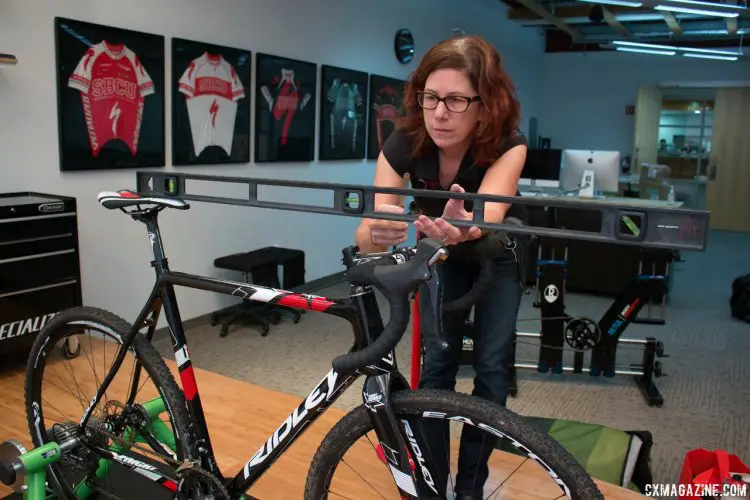
No matter how long you’ve been racing, a bike fit can be invaluable in addressing physical issues or adapting to a new bike or aging body. photo: Specialized’s Julie Bates helps dial in a bike fit. © Cyclocross Magazine
Interview with Todd Schoeni and Mitch Graham About Bike Fitting
Chris Mayhew: Introduce yourself, maybe a sentence or two as it relates to your fitting business.
Todd Schoeni: Hello, my name is Todd Schoeni, and I have been a bicycle fitter for 10 years. I’ve trained with Specialized and Dr. Andy Pruitt in their basic and masters’ fit programs, with extra programming in time trial, triathlon and mountain bike fit. As well as training with Curtis Cramblett, Paraic McGlynn, Greg Robidoux and many others. I typically see anything from pro-level triathletes, cyclocross and mountain bike racers to weekend warriors and everything in between.
[Author’s note: I’ve worked with Todd for years myself and refer clients to him.]
Mitch Graham: I would say in some sense I’ve been fitting since I started in bike retail in 1998. When you sell a bike, the buyer expects some level of fitting performed on the bike. It is up to the business to decide how comprehensive a fitting you will provide on the new bike.
Since before I started working, BioWheels has always provided an extensive experience for a new bike buyer with fitting, dialing in suspension, talking through the technology of the bike with the client and so on. By our shop’s fitting standards today, our fitting product a couple of decades ago was certainly crude, but it laid a foundation of practice and experience and started a quest of improvement and continuing education in the fitting science that led to where we are today managing 300-400 fitting clients a year. Each client today usually comes to me with a specific set of issues or problems they are experiencing on the bike, and I love being able to help with that.
CM: What’s the number one reason people come to you?
TS: If I had to sum it up in a short-ish response, I would say “problems.” Most people come to me when they are having back issues, knee issues, hip issues, excessive numbness or tingling, etc. It’s usually something that is out of the ordinary and their awareness of it tells them it’s time to get it looked at.
I will say, a close number two reason is most people want to be sure their position is right for them. I’m seeing more and more proactive behavior when it comes to bike fit, which is encouraging.
MG: There are any number of reasons that clients may schedule a fit. Sometimes it will stem from a specific issue, such as back pain, saddle discomfort, numbness in their hands, issues like that. A lot of times a buddy recommended they see me because they had a good experience and wound up picking up more speed and comfort. It’s common for one person to book a fit with me, then their buddy books a week later upon their friend’s recommendation.
I’m wired to look for improvements wherever I can find them in someone. Are there improvements we can find in their fit? Can we improve their posture? Are they grinding away in a low cadence and getting leg cramps? Are their tires slow? Do their shoes fit? Anywhere and everywhere I’ll look during those three hours for improvement for clients.
[Author’s note: I have found that I go to Todd a lot just to have him recheck my measurements. They are often off after a year of minor adjustments or replacing equipment and those millimeters matter.]
CM: What do you see as the difference in a ’cross-specific fit versus road or mountain bike?
TS: Mainly, I see differences in reach and drop. With ’cross bikes, you’re actually “driving” the bike much more. This can mean you have a bit less drop and a bit less reach to have better control and maneuverability. There are certainly a lot more considerations for road versus cyclocross fit, but that is a prominent one.
MG: I’d say the biggest difference is determining the individual rider’s optimum weight balance between saddle and bars for each discipline. Going from road fit to ’cross fit to mountain fit, we are subtly removing weight from the hands to improve control and confidence. How much we do that depends on the rider, their preferences and their style of riding.
The fitter’s experience really plays a role here and having raced and ridden all three extensively myself it really helps communicate some of the desired outcomes to my clients. Ultimately you need to test the fit, so I provide time during the fit session for the client to test ride outside in the park behind the shop. I’d rather be able to get feedback there and then so that we can make adjustments right away if needed.
CM: What benefits would one see from a ’cross-specific fitting session?
TS: I believe increased confidence in handling and agility. Many times I see ’cross bikes set up with a road fit. That’s not bad for pedaling, but not great for handling when you are covering grass, asphalt, dirt, mud, sand and any other medium you can think of. Couple that with tight cornering and off-camber terrain, and you’ve got a need for a ’cross bike fit session.
MG: The purpose of a bike fitting is to search out improvements wherever they are available: stronger pedaling, more endurance, better comfort, less pain, better handling, etc. Any and all of these improvements are commonly found inside the fit studio.
CM: What limitations or issues do you see with cyclists that result in fit issues (weak glutes, lack of flexibility), and are there any corrective exercises you’d recommend for people in that regard?
TS: Flexibility is one of the major drivers for fit issues. We’re a nation that sits at desks, right? We have tight hamstrings, we have tight hip flexors. We don’t stretch enough or really focus on routine human maintenance. Gluteus medius and core stability are also significant muscle issues with a lot of people—weakness mainly—but not as prominent as lack of flexibility.
I’m careful with prescribing corrective exercises. I tend to err on the side of caution here and usually refer someone to a physical therapist or doctor if they have significant issues. I’m lucky to have a great network of PTs, doctors and trainers that I have built over the years. I can usually spot a significant problem and refer to someone who can assist. However, if it is something simple, I will instruct folks on some simple stretching, gluteus medius exercises or even just core work. Planks and side planks are simple and effective.
[Author’s note: Todd and I spend a lot of time, almost daily, talking mobility or the limiters of it. So while he doesn’t prescribe exercises, we have certainly talked about it and he is very knowledgeable. My opinion is that cycling leads to some very specific deficits and there are few targeted exercises most people would benefit from. However, I have trouble assigning those remotely as form matters a lot and people will often do the exercises incorrectly using the same incorrect patterns they have learned from cycling. It’s a tricky issue, for sure.]
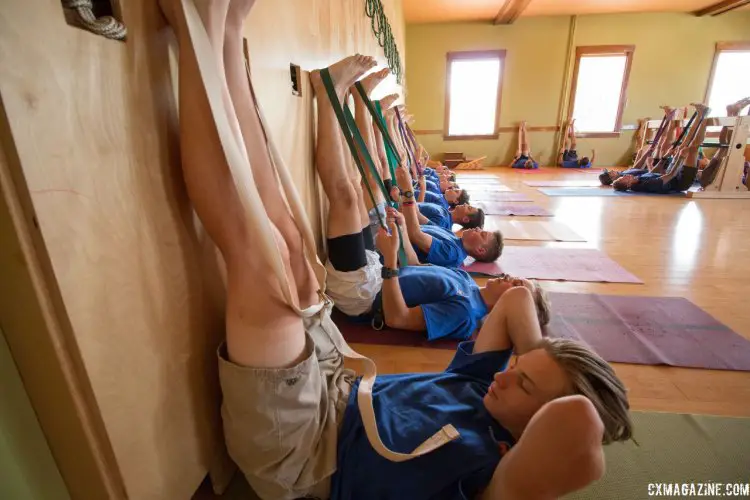
Flexibility is important for a good bike fit, and exercises like yoga can help reduce injuries. 2017 Montana Cross Camp moments. © Cyclocross Magazine
MG: A good solid physical assessment of the client is vital to addressing their issues. Weakness or tightness can lead to pain and injury, so I typically will send each client some homework based on what we learn during the session.
CM: Thanks to both Mitch and Todd for their answers and for being good friends. Obviously, these two might not be local to you but there is hopefully someone somewhere near you that can do the same things for you. Find that person, or persons (perhaps a fitter and a movement specialist) and address the fit issues you are having. There’s no need to suffer through those issues. Addressing them may very well allow you to train more, or at least enjoy your riding more.
For more training advice, see our Training Tuesday archives.













